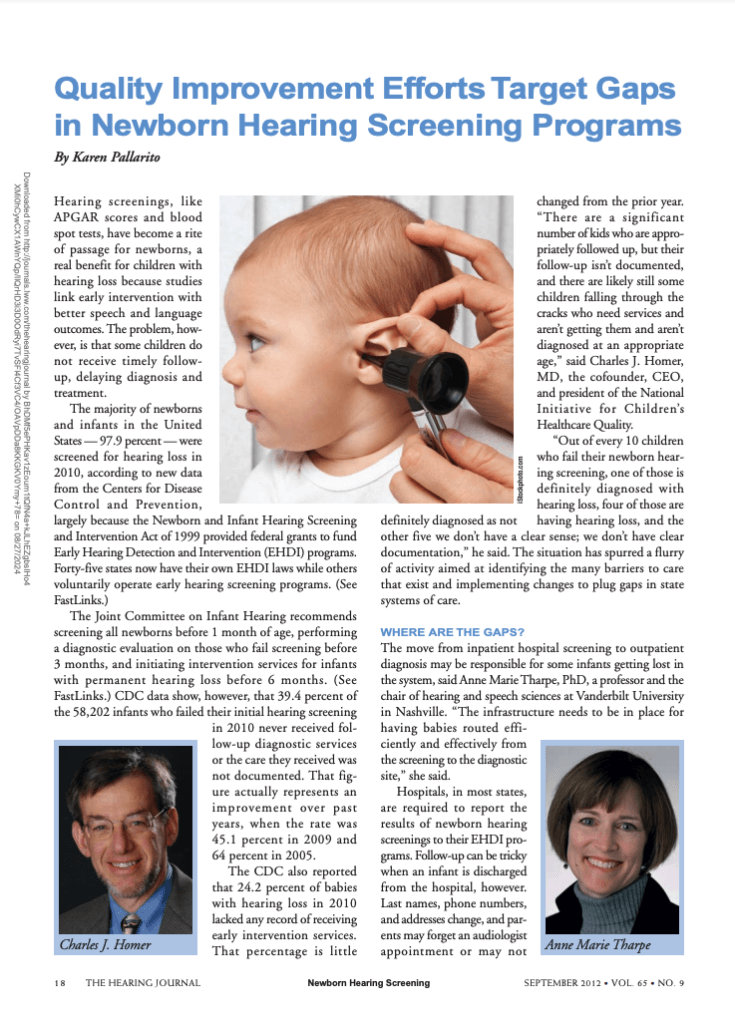Quality Improvement Efforts Target Gaps in Newborn Hearing Screening Programs
The Hearing Journal
Abstract
Hearing screenings, like APGAR scores and blood spot tests, have become a rite of passage for newborns, a real benefit for children with hearing loss because studies link early intervention with better speech and language outcomes. The problem, however, is that some children do not receive timely follow-up, delaying diagnosis and treatment.
The majority of newborns and infants in the United States — 97.9 percent — were screened for hearing loss in 2010, according to new data from the Centers for Disease Control and Prevention, largely because the Newborn and Infant Hearing Screening and Intervention Act of 1999 provided federal grants to fund Early Hearing Detection and Intervention (EHDI) programs. Forty-five states now have their own EHDI laws while others voluntarily operate early hearing screening programs. (See FastLinks.)
The Joint Committee on Infant Hearing recommends screening all newborns before 1 month of age, performing a diagnostic evaluation on those who fail screening before 3 months, and initiating intervention services for infants with permanent hearing loss before 6 months. (See FastLinks.) CDC data show, however, that 39.4 percent of the 58,202 infants who failed their initial hearing screening in 2010 never received follow-up diagnostic services or the care they received was not documented. That figure actually represents an improvement over past years, when the rate was 45.1 percent in 2009 and 64 percent in 2005.
